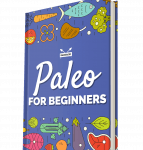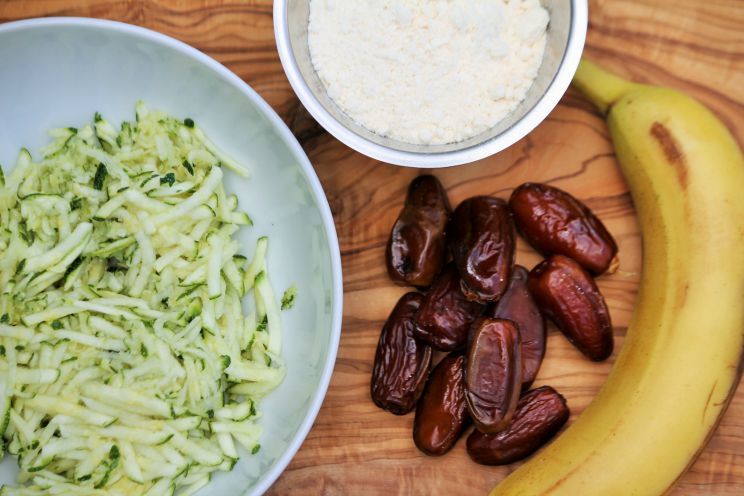Put down those breadsticks! We’ve got nine reasons to ditch bread and pasta for good.
Carbohydrates are a tricky topic. Whether it is carb bashing, carb loving or just over-carb-sumption, the Internet is full of different opinions and theories. The answer may actually lie somewhere in the middle (as with most things), as neither extreme seems to end in long-term success. We have been consuming a carb-heavy diet for a long time now, even though our Paleo ancestors certainly did not eat this way.
Bread and pasta are two foods which are beloved in the American diet, but 70% of the United States is now overweight (with 30% being obese). That is 78 million people who are now obese – with roughly 225 million being simply overweight! So it may be time to take another look at all our wheat (and overall carbohydrate) consumption.
As you will find out by the end of this piece, bread and pasta do not need to be included in the diet whatsoever – for a variety of health reasons. So let’s start at the beginning, and with the surprising fact that, technically, carbohydrates are not essential at all!
1. They’re Not Essential
At its very core, a carbohydrate is a biological molecule. Though many of us immediately associate the term “carbs” with bread or pasta, there is a lot more going on with carbohydrates than that. Carbs consist of carbon, hydrogen and oxygen atoms.
Though the American diet may lead many to believe otherwise, carbohydrates are not at all essential for the human brain or body! This is sort of unbelievable to many at first, as iodine (think of table salt) is actually an essential nutrient. But the truth is, carbohydrates are not an essential element for humans. [tweet_quote] Carbohydrates are not essential for the human brain or body. [/tweet_quote]
That being said, many do better with at least some carbohydrate in the diet – even if it is less than 50 grams per day. The body will use carbohydrates preferentially for energy, if protein, fat and carbs are all consumed simultaneously. Want another reason to avoid sugary drinks and food? Those carbs get burned quickly and leave you feeling “high” then “low.” After an hour or so, you will be craving more junk food to get your energy levels back up!
2. Less Bread And Pasta = More Weight Loss
Most of us want to lose weight but it’s hard to give up our bread and pasta. One common approach is to “go low carb.” And in fact, low carbohydrate diets have gone in and out of style for decades – but many swear by them for weight loss. Interestingly, the science is undecided, as some cite that the high protein content of these diets is really what matters. The concept that avoiding high-sugar (mostly processed) foods will likely lead to weight loss is fairly straightforward.
However, it is also important to avoid other problems, like not replacing these calories with other junk food, and instead substituting in vegetables, quality sources of fat and starchier sources of carbohydrates. Don’t replace the bread and pasta with foods that are also low in nutrients! The other issue with low carb diets is that many feel “slow,” “sluggish” and do not give their body the proper adaptation time to start burning fat more efficiently.
3. Ketogenic Diets Help To Burn Fat
Ironically, everyone wants to burn fat, but no one wants to give up the bread! But if one wants to truly dip into their fat burning ability, they may go even lower in carbohydrate consumption, and follow a ketogenic diet plan. By cutting carbohydrates down to less than 80 grams per day, dieters are now running almost entirely off of fat.
(Read: What You Need to Know Before Going on a Ketogenic Diet)
There are a variety of processes which change here, as the body and brain start making ketone bodies. These come from the breakdown of fatty acids – largely from the now higher-fat diet you are consuming. One anecdotal benefit of this type of diet is that many report vastly less hunger – which helps greatly with weight loss.
You will not be consuming bread or pasta on this plan, so check out our article “Should You Combine A Ketogenic Diet With Paleo?“. You will watch the fat melt away, as your bread and bagels go stale on the countertop!
4. Even Athletes Don’t Need Them
Many athletes consume a Paleo diet – but they may do best with more carbohydrates than the average person. While some have attempted to do the exact opposite, and try a ketogenic diet while performing athletics – their results are mixed at best.
What does the science say? While not quite definitive, the general consensus seems to be that increased carbohydrate intake enhances endurance and performance. As anyone who has ever performed a CrossFit workout or has run a marathon can tell you – you’re going to want some carbohydrates!
Part of the issue with going too low carb while performing athletics is that cortisol is increased when carbohydrates are decreased, and this affects testosterone (among other things). The free testosterone to cortisol (FTC) ratio is an important biomarker for over-training, and many fall into this trap when trying to go low carb and also actively exercise. They go from one extreme to the other: too many wheat-based carbs to too few carbs!
But just because you are consuming more carbs if you’re active does not mean you have to load up on bread! Buy potatoes in bulk, try some spaghetti squash, sweet potato fries, plantains — whatever strikes your fancy! Check out our Ultimate Paleo Diet Shopping List for even more ideas of great carbs to include in your diet.
5. Other Carbs Have More Nutrients
Bread and pasta are widely consumed because it’s cheap for food companies to produce them, not because they contain the most nutrients. What is most important about carbohydrates – no matter what level of intake you decide on – is that they are high-quality in nature. This means your carbs need to come from a potato, sweet potato, vegetables or fruit – not a vending machine or package. This is also a mistake that many make – sometimes feeling the lethargic effects of gluten or blood sugar spikes and crashes – instead of the smooth, even energy of starchier sources of carbs.
No matter what level of carbohydrate intake works best for you, you are going to need to make smart food choices. Keep in mind that it does become a little bit more difficult to eat 200 grams of carbohydrates per day if you’re not relying on quick fix sources, like bread and pasta. So plan accordingly, buy lots of potatoes (sweet or white) and load up on veggies and fruits!
6. You May Be Sensitive To Gluten
Though traditionally thought to not be a problem for anyone (unless you had celiac disease) gluten is instead proving to be a potential link to many different health problems. Autoimmune diseases in particular show problems with gluten ingestion, and the only way for you to know if you’re sensitive to this protein composite is to take it out of your diet for 30 days, and see what happens.
7. Other Problematic Compounds Besides Gluten
Since all food companies include gluten heavily in their products, they’ve started to fight back against the gluten-free movement with poor science and PR campaigns. But the bottom line is, bread and pasta contain many problematic compounds. These include, but are not limited to: FODMAPs, agglutinins (proteins which bind to sugar), prodynorphins (proteins involved in cell communication), and proteins formed when wheat is digested (deamidated gliadin and gliadorphins). [tweet_quote] Studies have shown that up to 50% of people do not even react to gluten itself, but other elements which are found in gluten-containing foods. [/tweet_quote]
While the science may still be out on gluten, many are sensitive to gluten without even realizing it. There are many other elements in wheat-based foods which can cause problems in those without celiac disease, which is why it’s so important to leave the bread and pasta out of your diet. Studies have shown that up to 50% of people do not even react to gluten itself, but other elements which are found in gluten-containing foods.
Since no one is eating isolated gluten, it is important to remove the bread and pasta (as well as the bagels and chips) from one’s diet, to see if you are sensitive to these peptides and/or proteins. You won’t die from leaving them out for a while – in fact, your health should improve!
8. There Will Be More Room For Protein
Want more muscle? Want to lose some fat? I bet you answered yes to both of those questions! And you know the best way to do that? Eat more protein! By fixing our diet (most Americans eat too many carbs and not enough protein) we will be heading in the right direction. Protein-rich foods provide essential amino acids, so you can lift heavier, get slimmer and avoid the calorically dense (but nutritionally empty) sandwiches of the past.
9. You Won’t ‘Crave’ Foods
We all know the feeling: you can’t wait to dig into that pizza. You fantasize about that bagel for hours before you eat it. While this may sound enjoyable to some, the real truth is that bread and pasta can be quite addictive and result in cravings. This is largely due to the high opioid-like activity in isolated peptides from wheat gluten. Yes, you read that correctly.
(Read: 3 Steps to Stopping Cravings in Their Tracks)
The bottom line is, if you leave out the nutrient-empty foods like bread and pasta, you won’t crave the nutrient-rich foods which will replace them. This means that you will be getting better and more nutrients, and won’t be craving the empty calories you used to. Since no one ever craves broccoli or kale, you are safe from irrational food choices!
In The End…
As you can see, there are many reasons why bread and pasta are not ideal carbohydrate sources. However, you can easily eat an ideal amount of carbohydrates without eating bread and pasta (or other wheat-based foods). The science is very much still unraveling, and new discoveries will no doubt be made. If you are currently eating a large amount of wheat-based carbohydrates, it is best to remove them from your diet for at least 30 days, to see how you look, perform and feel without them.
If you go this route, remember to fill up on sweet potatoes, white potatoes, yucca root or other starchy sources of carbs (some fruits too), and allow 3-4 weeks to fully adapt to this new diet. Many find their allergies disappear, their food cravings diminish, and their hormones get back in line. Many give up on diets without letting their bodies adjust, and they lose all the magic. Do not let this be you! I hope I’ve answered all your questions about wheat intake – eat wisely, and leave that stuff off of your plate!


 Coconut Flour Bacon Pancakes
Coconut Flour Bacon Pancakes









Show Comments